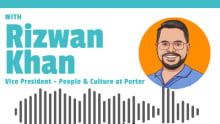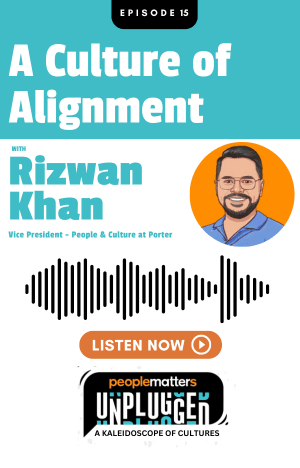"It's about how we optimize the environment": Aon's Peter Bentley

In the months since COVID-19 emptied workplaces around the world and prompted a massive shift to remote working, companies have increasingly been rethinking their approach to the workplace. One pulse survey by Aon found that, as of early May, a third of companies were either considering a long-term restructuring of their workforce or were already doing it; some had also enhanced their rewards programs to better support employees, especially those with young children. Will these changes affect other aspects of how companies run their workplaces in the future?
People Matters asked Peter Bentley, Chief Commercial Officer and Future of Work Lead for Aon's global Human Capital Solutions division, for additional insights on the findings. Here are some of the points he shared.
Now that people are more open to flexible work and irregular timings, do you think the profile of the workforce will change to include a wider variety of demographics?
In one of our recent surveys, a large proportion of firms said they were looking into adjusting their working model. When we think about the working model, remote work is probably the most obvious. But people are also looking at other fundamentals, such as the concept of the five-day week or 9-5 timing. They are questioning the necessity and relevance of these models. And we've seen clients coming to the realization that if they change their working model, that allows them much more flexibility around worker types.
This skews towards the female demographic, because one of the groups that could benefit the most is parents who have to stay at home to look after young children. And that in turn raises questions around pay equity, diversity and inclusion.
It's not actually a new conversation. Historically, we've already seen the shift towards flexibility when the millennials and centennials entered the workforce—the expectations around institutionalized work with its trappings of the 9-5 hours, the commute, and the other aspects of office work have already changed. COVID-19 has simply acted as an accelerant to the change.
How can companies strike a balance between the cost pressures they are facing today, and the need to maintain a certain level of responsibility to their employees?
There's an overarching theme of duty of care here. Historically, if a company needed to save money, they would look at reducing costs, which might have meant reducing head count. But this isn't working out so well any more. Back during the global financial crisis, a lot of companies cut head count quite aggressively, and that turned out to be quite a bad idea. The financial industry is still suffering from it now. I think most firms today have come to the understanding that if employees are at risk, they are at risk.
So today, the question is less around head count than salaries: where and how much to reduce, whether the reduction is temporary, and if so, for how long. While everyone is quite conscious about the need to manage expenses, they are also looking into models such as the two-day or three-day week, and considering whether the nature of someone's work means that they are operating as though on a contractual basis.
For that, companies need to work in partnership with their employees such that employees understand they might have to take a reduction in pay, but in return, they will have flexibility around how they work. It has to be done with the employees at the center.
COVID-19 seems to have driven an increase in benefits as well—how does that fit into the picture?
There's been a significant amount of change in terms of well-being and benefits provided, but this change would have happened anyway. But these things have to be paid for, and it doesn't necessarily come out of people's pay. And this is where the element of working with employees comes in. Implementing things like the four-day week, transiting people into a role more similar to a gig economy role—those things need to be done on a voluntary basis.
That also has implications on how to incentivize people appropriately. If, for instance, you move somebody to a four-day week, that raises considerations around whether the pension should remain at the same level. If you have people working flexibly, that raises considerations around how to keep them productive.
In Asia, health and benefits are a significant cost, and I think that with COVID, they are clearly becoming much more valuable to the individual. Companies are also appreciating the need to provide them, and as with head count and cost control, the options being considered today are probably much more responsible than in the past.
I think people have realized that it's less about the future of work, and more about how we optimize the environment.
On the topic of keeping people productive, Aon's survey found that over a third of employers don't actually have the tools to measure productivity. How much of an issue would that really be?
If you are aware that you can't measure productivity in a clear way, I would suggest that you're actually also aware that you aren't under-productive. Besides the 37 percent who said they aren't able to measure productivity, there was also a large number who said productivity had increased or stayed the same. So I think the takeaway from that particular finding is that a very small amount of people are unproductive.
I would also emphasize that it's always been hard to measure productivity in certain roles. The fact that someone is sitting in an office does not imply productivity—the environment doesn't necessarily change productivity. In fact, there is enough research, especially on target-driven roles, to show that when you give people autonomy around the results they want to drive, they tend to be more productive.
Where might be a good place to start thinking about productivity and its measurement?
I don't think anyone actually has a hard and fast rule at this time. We've heard of some people using data as a metric, tracking statistics related to when people are on or off the clock. But from where we sit, it can be much more raw.
It turns on understanding whether a person has the motivation, the skills, and the capabilities to do their job. That is where willingness to offer autonomy around the job comes from.
The cynical question that many might become caught up on is: if we offer people the right to stay at home to do their work, how can we be sure they'll be equally productive? And certainly there will be a small number of people who find themselves lost without the office environment. But the first test is really to make sure you are aligned with the worker types who have the discipline, the tenacity, the agility to get their tasks done outside the office. And ultimately, there is an element of trust involved.














